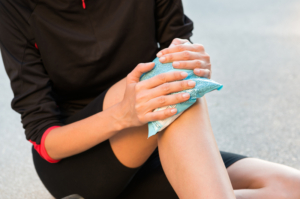Soft tissue injuries or disorders depends on the specific nature and severity of the condition. Here are some common approaches:
- Rest, Ice, Compression, Elevation (RICE): This approach is commonly used for acute soft tissue injuries such as strains, sprains, or bruises. It involves:
- Resting the affected area to prevent further injury.
- Applying ice packs to reduce pain, inflammation, and swelling.
- Using compression bandages to support the injured area and reduce swelling.
- Elevating the injured limb above the level of the heart to reduce swelling and improve circulation.
- Physical Therapy: Physical therapy plays a crucial role in the treatment of soft tissue injuries by:

- Providing specific exercises to strengthen and stretch the affected muscles, tendons, or ligaments.
- Using modalities such as ultrasound, electrical stimulation, or therapeutic massage to reduce pain and promote healing.
- Teaching proper body mechanics and ergonomics to prevent re-injury.
- Medications: Over-the-counter pain relievers such as acetaminophen or nonsteroidal anti-inflammatory drugs (NSAIDs) may be used to manage pain and inflammation associated with soft tissue injuries. In some cases, prescription medications or muscle relaxants may be necessary for more severe pain or muscle spasms.
- Steroid Injections: Injections of corticosteroids may be recommended for certain soft tissue conditions, such as tendonitis or bursitis, to reduce inflammation and relieve pain.
- Bracing or Splinting: Immobilizing the affected area with a brace, splint, or cast may be necessary for more severe soft tissue injuries to promote healing and prevent further damage.
- Massage Therapy: Massage can help alleviate muscle tension, improve circulation, and promote relaxation. Techniques such as Swedish massage, deep tissue massage, or myofascial release may be used depending on the specific condition.
- Shockwave Therapy: Extracorporeal shockwave therapy (ESWT) may be used to stimulate healing in chronic soft tissue conditions such as plantar fasciitis or Achilles tendonitis by delivering acoustic waves to the affected area.
- Platelet-Rich Plasma (PRP) Therapy: PRP therapy involves injecting concentrated platelets from the patient’s own blood into the injured area to promote tissue repair and regeneration.
- Surgery: In some cases, surgical intervention may be necessary to repair or reconstruct damaged soft tissues, such as torn ligaments or tendons. Surgical procedures may involve arthroscopy (minimally invasive surgery), open surgery, or tendon transfer.
- Regenerative Medicine: Emerging treatments such as stem cell therapy or tissue engineering hold promise for promoting tissue regeneration and healing in soft tissue injuries, although more research is needed to determine their effectiveness.
